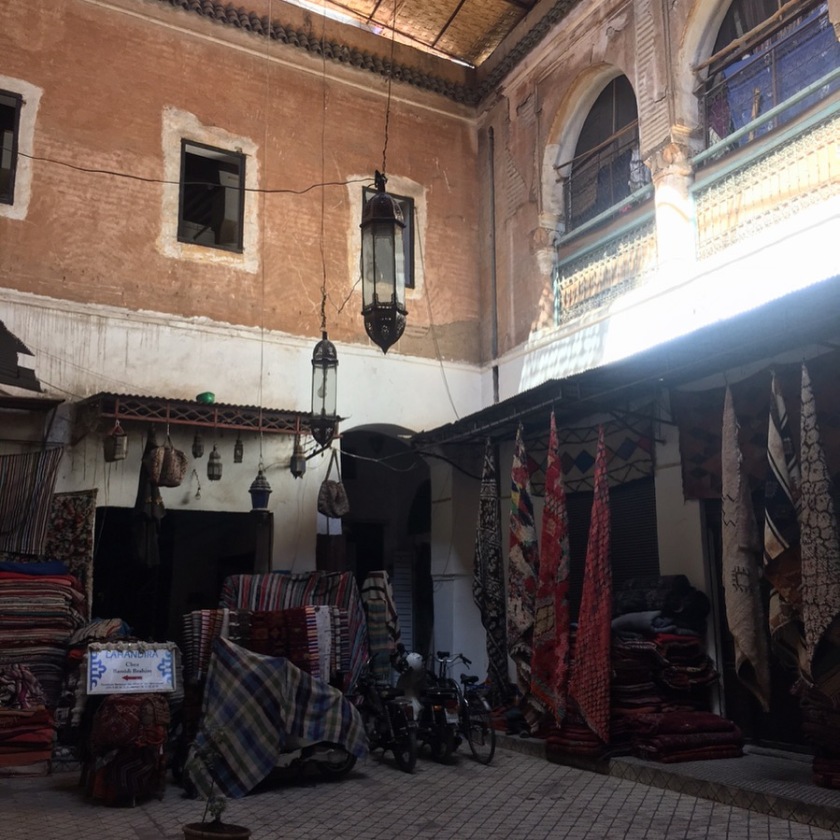Ahhh, Morocco. You’ve heard about it in songs. You’ve seen it in movies. It’s the land in Northern Africa that’s always been romanticized. I’m not sure what I was expecting or envisioning when I first entered the country but what I got was a culture shock. I walked through the chaotic market in Marrakech completely bewildered as I past snake charmers and shopkeepers eagerly trying to coax me into their stores and purchase a silver teapot or a pair of colorful house slippers. Was I ready for the chaos? No, absolutely not. But once I adjusted, I was able to see past the reckless drivers and packed alleyways to appreciate the city for what it really was: An exciting cultural experience.

Interior of a rug shop in Marrakech
Within no time I had my sketchbook in hand and I was out drawing what I saw in the streets (cats roaming around, building fronts, etc.) and after I was done exploring, I would read and organize my drawings/journal entries in the living area of our Riad. I could stare at the intricate ceiling engravings and soak up the incense in that room for hours. The attention to detail in Moroccan homes and interiors is incredible and faith has a lot to do with it. Morocco is a part of the Islamic world, the official religion of the country being Sunni Islam. The Quran influences almost every aspect of everyday life, including the country’s art and architecture. Islam is considered to be an iconoclastic religion, meaning no animals, living beings or religious iconography is usually ever portrayed in the artwork. The majority of art lacks figural representation, so rather than emphasizing painting and sculpture, Islamic artists have become masters of ornamentation and the decorative arts throughout the centuries. The enthusiasm for embellished interiors and detailed surface art extends to elaborate tile work and hand woven carpets. Morocco’s unique Spanish and Mediterranean influence has gained more and more attention over the past five or ten years and has officially sparked a major fad in interior design.
I reached out to interior designer and traveler Veronica from Semikah Textiles for some insight to this trend. Her travels while “rug hunting” has allowed her to meet with tribes and the women who make the rugs you see pictured. Veronica explained that most tribes have specific weaving techniques. If you buy rugs from families, you often get “inter -blended weaving techniques”. These rugs also have stories and meanings behind them. I told her about how I went to the Atlas Mountains during Ramadan or the ninth month in the Islamic Calendar. A friend there invited us to breakfast with his family in the evening. At his house, a relative was weaving a rug in a separate room. Veronica informed me that these women tie stories into their patterns, sometimes their work symbolizes a lost child, other times there’s no tragedy at all. Each rug is special but in Veronica’s mind, nothing can replace a beautiful, vintage rug. A nice minimal space can really be livened up by a pink patterned carpet. For those of you who haven’t heard of Semikah textiles, I really encourage you to check it out for inspiration or just to stay ahead of the trend!
After visiting Morocco, it’s easy to see why it holds a sentimental value for so many people. It’s a place to do some introspection, reflection, and to learn about other ways of life outside of western traditions. If you have the chance to go, then take it. Take your camera and colored pencils with you!



